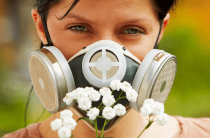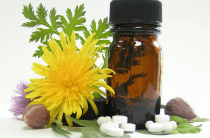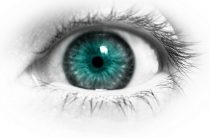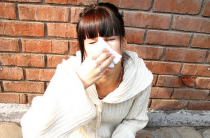Summer time is the best time to relax outdoors. So you can go to the sea, a country house, exotic countries where you can swim, sunbathe, warm up in the sun. Also, sun exposure helps to strengthen the immune system, the nervous system, and saturate the body with vitamin D. It would seem, what more could you want? But here, too, you need to be careful.
Recently, a large number of people are beginning to show hypersensitivity to the sun's rays. This disease is called sun allergy (photodermatosis, solar dermatitis), the signs of which can appear immediately or after a couple of hours or even days. The reaction caused by the influence of the sun is called photodermatosis, a phototoxic reaction. Approximately one fifth of the world's population is allergic to the sun.
Types of sun allergies
 The action of ultraviolet radiation provokes various unnatural reactions in a person - photosensitivity. These include:
The action of ultraviolet radiation provokes various unnatural reactions in a person - photosensitivity. These include:
- phototraumatic reaction, which manifests itself after a very long exposure to the sun. A completely healthy person can get sunburn due to exposure to ultraviolet radiation. Therefore, it is recommended to sunbathe in the morning and in the evening.
- phototoxic reaction, can be expressed as edema, blisters, erythema. It is caused due to ingestion of an allergen or after the injection of certain drugs, herbs, and other products that contain photosensitizers.
- a photoallergic reaction develops in individuals whose body rejects ultraviolet radiation, and their skin and mucous membranes perceive solar radiation as an alien, toxic effect. This reaction is due to a malfunction in the functioning of the immune system. Its consequence is the appearance of papules, weeping, vesicles, skin lichenification (rashes with a bright pattern that contribute to the thickening of the skin, their dryness and flaking).
The most susceptible to these sun allergies are people who have:
- diseases of the endocrine system;
- diseases of the liver and kidneys;
- immune system disorders.
Sun allergy symptoms
The first signs of allergy become noticeable after one to three days after contact with the allergen.
People with sun allergies often experience the following symptoms:
- redness, rashes, severe itching, abscesses of certain areas of the skin, which were most exposed to ultraviolet radiation;
- slight relief of the skin, its roughness, severely swollen, itchy lesions that appear on the limbs, torso, face;
- the appearance of crusts, scales, minor bleeding;
- urticaria, eczema, vesicles on the skin;
- eczema also appears not on the affected areas, but on those that were hidden from the sun's rays.
In a strong, physically healthy person, an allergy to the sun's rays does not manifest itself, it is subject to:
- babies;
- children who are weakened by illness;
- older people who have many chronic diseases;
- pregnant women;
- those people who have recently undergone cosmetic procedures;
- light-skinned people.
The main causes of sun allergy are considered to be:
- pathology of the liver and kidneys;
- malfunctions of the endocrine system;
- failures in pigment metabolism;
- pregnancy;
- autoimmune diseases;
- decreased immunity;
- taking antibiotics, anti-inflammatory drugs for a long time;
- taking hormonal contraceptives;
- vitamin deficiency;
- light skin tone;
- hormone imbalance.
The reason for the appearance of allergies to the sun in children is that the immune system is weakened after infectious diseases, which is not able to withstand allergens. By themselves, the sun's rays are not the cause of the development of allergies, they can only provoke its development.
Factors that cause allergy to the sun
A photosensitizer or photoreactive agent can provoke an allergy to the sun, the intensity of which will depend only on how strongly the allergen affected the human body and for how long. The human body, which has been exposed to artificial or natural ultraviolet rays, is affected by photosensitizers.
Phototoxic reactions are caused by certain substances found in items such as:
- Hygiene products (antibacterial soap and gel).
- Cosmetics and perfumes (lotions, perfumes, eau de toilette, cologne, deodorant, lipsticks, creams that contain essential oils of citrus, cumin, bergamot and others).
- Sun protection products (ironically, sun protection products can be harmful due to their benzophenones and para-aminobenzoic acid content, which provoke an allergic reaction).
- Food additives (mainly sweeteners).
- Tattoos (due to the use of cadmium sulfate as an excipient).
- Medications (an allergic reaction can occur even after a long period of time after stopping the drug, which during this time has already managed to accumulate in the human body, and exposure to ultraviolet radiation provokes an allergic reaction).
Foods and medicines that can trigger allergies
The instructions for use of many drugs contain indications that photosensitivity will be a side effect of taking these drugs. It occurs very rarely - 1 time in 10,000 cases.
These medicines are:
- hormonal contraceptives;
- tetracycline;
- macrolide;
- co-trimoxazole;
- pipemidic acid;
- antimycotic agents;
- non-steroidal anti-inflammatory drugs, which are aimed at lowering the temperature, pain relief (Ibuprofen, Piroxicam);
- antihistamines (Diphenhydramine, Promethazine);
- cardiac drugs (fibrates, amiodarone, digitoxin, atorvastatins);
- drugs against depression (Doxypin, Melipramine, certain types of sleeping pills).
Plants that can cause allergies include:
- nettle, buckwheat, quinoa, ash, ranunculus, hogweed;
- St. John's wort, clover, anchors, agrimony;
- sedge, blue-green algae.
 Foods that cause sun allergies include:
Foods that cause sun allergies include:
- carrot juice;
- Bell pepper
- citrus juices;
- parsley;
- alcohol, especially saturated with dyes, preservatives;
- coffee;
- chocolate;
- nuts.
Ways to treat sun allergies
As with all types of allergies, the first stage of treatment is to determine which allergen provoked this reaction and eliminate it. So, if it is food, drugs, herbs, you should immediately stop using them. In the event that taking the drug is mandatory, it is worth minimizing the time spent in the sun.

Cream and ointment
Corticosteroid creams and ointments are very effective for eliminating the symptoms of "solar" allergies.
They are used only in severe stages of allergies, by prescription. The duration of taking such drugs should also be short, because with a very long use, skin disorders, erythema, dilated blood vessels on the skin and after its atrophy may appear. Non-hormonal ointments and creams that can be used when an allergic reaction to the sun occurs include Fenistil gel, Desitin, Gistan, La-cree, Panthenol and others. Gels and ointments for sunburn are Atovegin, Psilo-balm, Solcoseryl, Livian.
Antihistamine
Then, when the patient underwent a full examination, he was examined by such specialists as a general practitioner, a dermatologist, an allergist-immunologist, and he was given a final diagnosis and determined what kind of cause provoked the onset of an allergy, antihistamines may be prescribed to him.
These drugs include Claritin, Suprastin, Tavegil. Third-generation antihistamines are Cetrin and Zodak, which are not highly addictive and allow a person to remain active.
vitamin therapy
Since a decrease in immunity can provoke the appearance of an allergy to the sun, it is very important to increase the protection and resistance of your body to various influences. To do this, it is necessary to replenish the supply of vitamins in the body. Vitamin C, groups B, E and nicotinic acid are prescribed for systemic treatment.
Enterosorbents and plentiful drink
It is important to cleanse your body of toxins and toxins using enterosorbents for this (Polysorb MP, Filtrum STI, Polyphepan, Enterosgel) along with the intake of large amounts of water. Thus, it will be possible to cleanse the body of allergens in a short time.
Folk remedies
Then, when a person cannot immediately go to the doctor's office, traditional medicine can be an excellent option for him, relieving symptoms and eliminating inflammation of the skin. Such preparations include cucumber, potato, cabbage juices. Potato and cabbage juice softens and quickly heals wounds and skin damage. You can apply compresses from the infusion of celandine or calendula to soften the skin.
If you notice a pathological hypersensitivity to the sun, you should contact the doctor and tell him when you had this reaction, how it manifested itself, what the rashes and sensations were.
First aid for burns
It is possible to provide first aid using not only medicines, but also folk remedies. You can immediately apply cabbage leaves to the burns, grease them with cucumber juice or raw potatoes.
Washed clean cabbage leaves are applied to reddened areas of the skin.
Cucumber without skin, tinder on a grater, and the resulting mass is laid out on gauze, which is applied to the inflamed areas. The film that has formed on the skin can protect it from irritation and various infections.
In the same way, you can prepare a compress from raw potatoes. To eliminate severe itching, the skin is lubricated with an infusion of baking soda and a bath with chamomile is drunk, a large amount of purified non-carbonated water is drunk.
With a one-time occurrence, an allergy to the sun can occur several times during the season. Therefore, in order to completely eliminate it, you need to undergo a full range of studies, depending on the results of which treatment is prescribed.
Photodermatosis occurs due to a decrease in liver function, vitamin deficiency. Therefore, in those people who have undergone a course of vitamin therapy and take hepatoprotectors, signs of solar allergy often disappear.
It also happens that photodermatosis is a hereditary disease, the main manifestations of which are rashes on areas of the body vulnerable to sunlight.
To prevent the development of symptoms of the disease, a person should be less likely to be in the sun. In severe diseases, he is credited with the use of hormonal ointments and antimalarials.
First aid for fainting
If a person with ultraviolet radiation intolerance stays in the open sun for a long time, his pressure often decreases and fainting occurs.
Usually this happens suddenly and unexpectedly for him, so only other people can help in this case.
In order to help a person come to his senses, you need to carry out the following actions:
- move it to the shade, or create an artificial shelter above it;
- raise your legs, thereby increasing blood flow to the head;
- splash cool water on the face, neck, chest;
- preferably, bring a cotton swab soaked in ammonia to the nose.
Most often, after these events, the patient comes to his senses. But if fainting lasts a long time, or if it occurs in a child or a pregnant woman, it is worth calling an ambulance. There are situations when a person must be in the hospital for a couple of hours.
Preventive measures
In order to protect yourself from allergies to the sun, you should follow the following rules:
- do not forget to use special sunscreens (lotions, creams). Apply them twenty minutes before going outside, and after coming from the beach, be sure to take a shower and apply a cream that moisturizes the skin.
- after you left the reservoir, you do not need to dry yourself with a towel, you just need to slightly blot the skin. If you start wiping yourself, the cream wears out of the skin and its effect, of course, stops. It is necessary to get the skin wet so that the drops of water remaining on the body do not attract the sun's rays, which can burn the skin and increase the manifestations of allergies.
- after bathing, it is best to dry not in the sun, but in the shade;
- in the sun, you need to use very small amounts of decorative cosmetics. Since, any gel, cream, toilet water that contain fragrances can cause age spots.
- people with sensitive skin should sunbathe only in the shade. Such a gentle tan will not, of course, give you a golden skin color, but it will not contribute to the appearance of burns, redness, peeling, fever, chills.
- at the initial stage, solar allergy is eliminated with the help of ointments that contain prednisolone, betamethasone, dexamethasone. And, of course, do not forget about folk remedies. Vegetable oil and sour cream can eliminate skin redness. It is best to use special creams and ointments after sunburn, which include anti-inflammatory components, extracts of medicinal plants. They are able to soothe the skin, cool it.
- dehydration must be avoided. Every day (especially in hot weather) drink two and a half liters of fluid. Thus, toxins will be more quickly eliminated from the body.
- wear loose-fitting clothing that covers the entire body: long skirts, trousers.
- eat foods that contain a lot of antioxidants, vitamins B and E, which contribute to the restoration of the skin. It is very useful to eat fresh fruits, vegetables, berries, green tea.
- do not experiment with exotic foods, they can contribute to the development of allergies to the sun.
If you consult a doctor in time, then the symptoms of an allergy of mild to moderate severity can be eliminated in a week. In the event that the allergy has become more severe, treatment can be delayed for several weeks.
You need to know that sun allergy is not a sentence. Following simple rules, you can sunbathe, swim, warm up in the sun without harm to yourself. For many children, allergies disappear with age.
You can get more information from our consultant.















